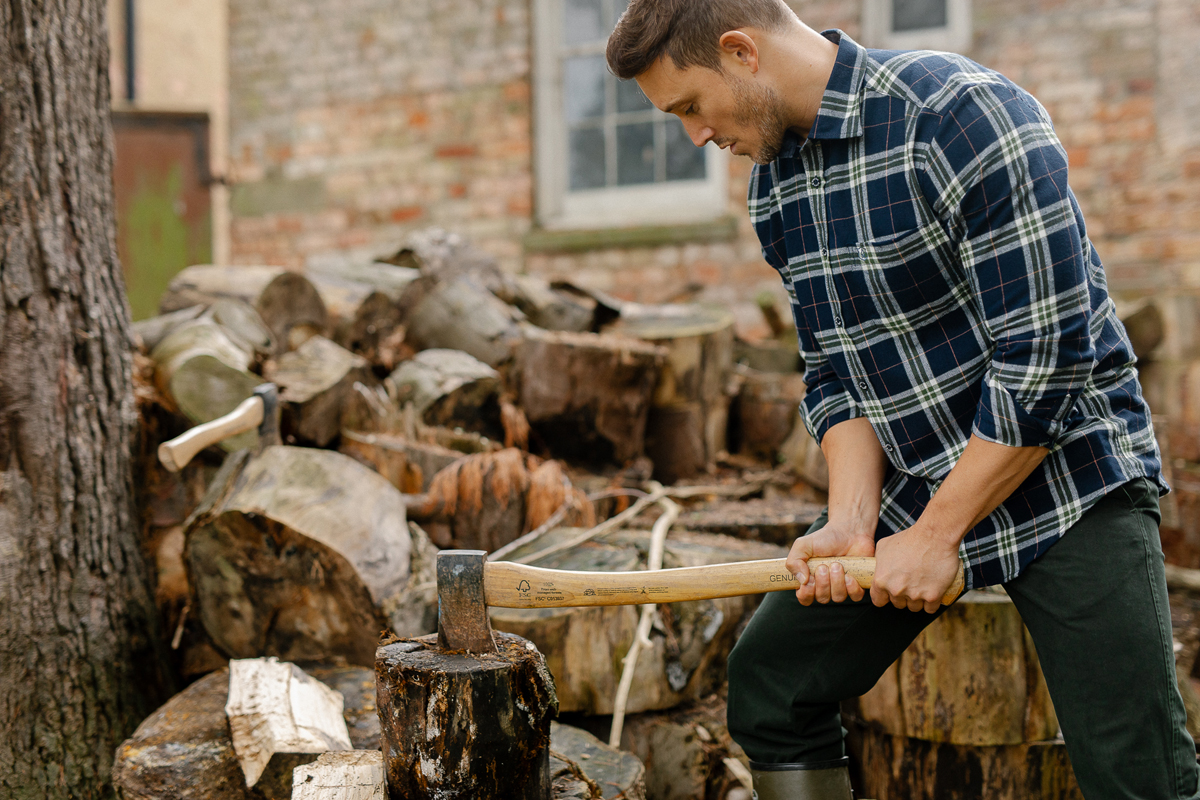The Story of Country Check Shirts: A Journey Through History and Styles
Benjamin on 3rd Sep 2024
Introduction
Country check shirts are more than just a fashion statement; they embody the heritage, comfort, and enduring style of the British countryside. Originating from traditional tartans, these shirts have seamlessly woven their way into the fabric of both rural and urban fashion. Their unique charm, versatility, and practicality have ensured their relevance across generations, making them a beloved staple in wardrobes around the world. In this blog, we’ll explore the origins and evolution of the country check shirt that we all cherish today.
The Origins of Check Shirts
Check patterns have a rich and storied heritage, originating with the Scottish tartans of the Highlands. These distinctive designs, characterised by their bold squares and stripes, trace back to ancient times when they were first woven into woollen fabrics by Scottish weavers. Each tartan was unique to a particular clan or region, serving not just as a practical garment but also as a potent symbol of clan identity and territorial affiliation.
The intricate patterns of tartans were more than mere decoration; they were embedded with meaning. Colours and motifs varied to represent different clans, localities, and even social status, creating a complex tapestry of Scottish cultural and social identity. The art of weaving these tartans was passed down through generations, preserving both tradition and skill.
As the British Empire expanded in the 18th and 19th centuries, these traditional tartans began to capture the attention of the broader British public. The check pattern, initially a marker of Highland identity, started to spread beyond Scotland’s borders, embraced by the wider British population. By the 19th century, the check shirt had transcended its regional origins to become a versatile garment worn across the British Isles and beyond.

Check Shirts and Rural Life: The Birth of Country Check Shirts
In the heart of the British countryside, check shirts have long been emblematic of hard work and practicality. Originally crafted from rugged fabrics like flannel, these shirts were perfectly suited for the demands of outdoor labour, offering both warmth and comfort against the capricious British weather.
As time progressed, check shirts became intrinsically linked with rural life. They were embraced by farmers, gamekeepers, and country sports enthusiasts alike, each finding in them a reliable and stylish companion for their daily tasks and leisure activities. The distinctive check pattern, once a mark of Highland tradition, evolved into a symbol of the pastoral ideal—representing not just functionality, but also a sense of timeless, rustic charm.
This deep-rooted connection with the rural way of life has firmly entrenched the check shirt within British country culture. It remains a cherished staple, worn with pride by those who value both its heritage and its enduring practicality. Today, whether donned for a day in the fields or a casual outing in the village, the check shirt continues to be a beloved emblem of British countryside living.

Evolution of Styles: From Function to Fashion
The classic country check shirt—traditionally adorned in earthy tones such as yellow, green, and red—has long been celebrated for its enduring appeal. In recent years, British fashion has taken this timeless garment and reimagined it with a touch of sophistication.
Modern designers have breathed new life into the check shirt, introducing slimmer cuts, softer fabrics, and even tailored versions that seamlessly transition from casual to smart-casual. This evolution has elevated the humble check shirt from its rural origins to become a versatile piece that is equally at home in both the countryside and the city.
Despite these contemporary updates, the essence of the check shirt remains firmly grounded in its rich heritage. It continues to embody the practicality and charm of its origins, serving as a stylish testament to its enduring legacy.
How to Style Country Check Shirts Today
The versatility of country check shirts makes them a key player in a range of stylish ensembles. Here’s how to elevate your look:
- Casual Look: Pair a check shirt with well-fitted jeans and a pair of classic trainers or sturdy boots for a relaxed yet polished outfit. This combination is perfect for a leisurely countryside stroll or a day out in town, offering both comfort and effortless style. A great casual country check shirt is our Checkley Flannel Shirt. It's a great stand-alone piece that works well with any pair of casual trousers.
- Smart Casual: Tuck a tailored check shirt into chinos and add a blazer for a look that strikes the perfect balance between polished and approachable. Ideal for a casual office environment or a dinner date, this outfit can be further elevated with Chelsea boots or brogues—footwear that transitions the check shirt from rustic to runway-ready. For a smart-casual shirt, I love our Sellack Tattersall Check Shirt. It's neutral and clean, perfect for making an impression.
- Layering: As the weather turns cooler, layer your check shirt under a snug jumper or a waxed jacket for added warmth and British flair. Complement the look with wellington boots for those country walks, or opt for quality Chelsea boots to harmonise with the wax jacket's sophisticated British style. When it comes to layering under a knit, the combination of our Chambers Check Shirt under the Bosbury Seawool Crew Neck is my personal favourite.

Conclusion: The Enduring Legacy of Country Check Shirts
Country check shirts have journeyed from the Scottish Highlands to the contemporary wardrobe, evolving in style yet never losing their classic appeal. Whether you're embracing the rural lifestyle or seeking a timeless fashion piece, the check shirt remains a versatile and stylish choice.
Next time you don your check shirt, remember—you’re not merely wearing an item of clothing, but a piece of history that has stood the test of time.

